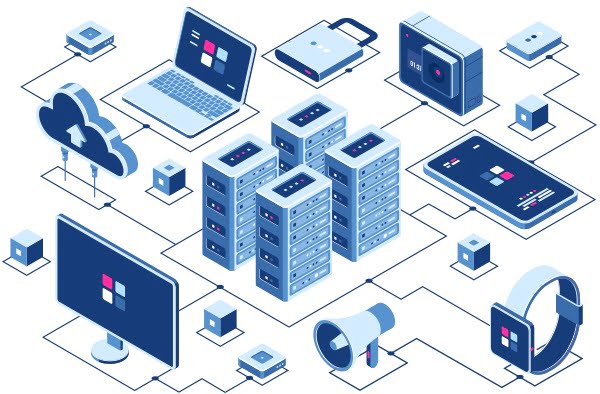Table of Contents
- Introduction to IT Infrastructure Optimization
- Benefits of an Optimized IT Infrastructure
- Common Challenges in IT Infrastructure Management
- Essential Components of a Modern IT Infrastructure
- How Cloud Technology Enhances IT Efficiency
- Cybersecurity: A Critical Element of IT Infrastructure
- Best Practices for IT Infrastructure Optimization
- Future Trends in IT Infrastructure Management
Introduction to IT Infrastructure Optimization
In an age where digital transformation is not just a buzzword but a business imperative, optimizing IT infrastructure becomes a crucial strategy for businesses aiming to maintain competitiveness. IT optimization involves refining the technological framework to boost productivity, improve quality, and streamline processes. Companies are increasingly looking to partners like Arctic IT to help navigate the complexities of IT infrastructure management. The expertise offered by such organizations not only drives efficiency but also catalyzes innovation by freeing resources to focus on strategic initiatives.
Optimization is more than just a technical process. It’s a holistic approach encompassing streamlining operations and integrating technology with business goals. With the proper infrastructure, businesses can enhance user experience, refine product offerings, and sustain a competitive edge in the marketplace.
Benefits of an Optimized IT Infrastructure
Optimized IT infrastructure benefits are manifold and cascade throughout the organization. Firstly, IT optimization can significantly reduce costs by enhancing system performance and reducing downtime. Efficient infrastructure can handle large workloads more effectively, thus saving on maintenance and troubleshooting expenses. Secondly, scalability is a critical advantage, as optimized systems can quickly adapt to increased business demands without compromising performance.
Additionally, streamlined IT operations can improve service delivery, enhancing customer satisfaction. Businesses will find themselves able to offer faster response times and more reliable services, ultimately leading to increased customer trust and retention. Furthermore, with integrated data analytics capabilities, businesses can make informed, data-driven decisions that support strategic objectives.
Common Challenges in IT Infrastructure Management
Despite the apparent advantages, managing IT infrastructure has its share of challenges. Many organizations need help with outdated technology that needs to integrate better with modern solutions. This technological lag can impede performance and lead to inefficient processes. Integration issues often arise as businesses need help systems with legacy infrastructure challenges.
Another significant challenge is cybersecurity risk. As systems become more interconnected, they become more vulnerable to cyber-attacks, requiring a proactive approach to security. Budget constraints can also pose difficulties in upgrading hardware or implementing new technologies. To mitigate these challenges, businesses must continuously evaluate and upgrade their infrastructure, invest strategically, and enhance staff training on managing IT systems.
Essential Components of a Modern IT Infrastructure
A modern IT infrastructure is a cohesive blend of several integral components. High-performance servers and storage systems form the backbone, providing the necessary computing power and data capacity. Reliable and high-speed networks ensure seamless communication and connectivity across all organizational levels.
Flexible software applications allow businesses to tailor IT operations to meet specific demands. Additionally, virtualization and containerization technologies contribute to more efficient resource allocation. Cloud solutions are often integrated, offering scalability and elasticity, while robust security mechanisms are imperative to protect against various threats.
How Cloud Technology Enhances IT Efficiency
Cloud technology represents a transformative component of IT infrastructure, offering a flexible, pay-as-you-go model that can significantly enhance operational efficiency. According to a recent cloud technology report, cloud services enable businesses to collaborate more effectively by offering remote access to essential apps and data. The flexibility provided by cloud solutions allows companies to quickly adjust to shifting market conditions or expand operations when needed.
Cloud technology also supports enhanced disaster recovery, enabling businesses to store backup data in multiple locations, ensuring continuity even in the face of an incident. By deploying cloud solutions, companies relieve the burden of IT maintenance from their on-site teams, allowing them to focus more on innovation and less on routine infrastructure management.
Cybersecurity: A Critical Element of IT Infrastructure
Cybersecurity is at the heart of modern IT infrastructure, especially as digital threats become more sophisticated. Effective cybersecurity strategies encompass an array of measures, from implementing encryption and firewalls to conducting regular security audits and employee training. Vigilance in cybersecurity protects sensitive data and builds trust with customers and stakeholders.
Firms must also incorporate cutting-edge cybersecurity tools that provide real-time insights into potential threats, enabling rapid response and minimizing risk. Cybersecurity should be viewed as an ongoing commitment rather than a one-time setup, necessitating regular updates and assessments to stay abreast of evolving threats.
Best Practices for IT Infrastructure Optimization
Optimizing IT infrastructure requires a comprehensive approach grounded in best practices. This includes conducting regular assessments to identify areas for improvement and keeping systems updated with the latest technology to ensure compatibility. Encouraging innovation within the IT department can lead to breakthrough improvements in technology use, ultimately driving operational efficiency.
Maintaining robust and frequently tested backup systems is vital for business continuity. Fostering a collaborative culture where IT teams work closely with other departments ensures that infrastructure improvements align with overall business goals. These practices collectively create a resilient and adaptable IT environment supporting business growth.
Future Trends in IT Infrastructure Management
As we look to the future, several trends are poised to redefine IT infrastructure management. Technologies like artificial intelligence (AI) and the Internet of Things (IoT) are set to revolutionize businesses by offering advanced analytics and automation capabilities. AI can facilitate predictive maintenance, reducing downtime by anticipating infrastructure needs before they become critical.
IoT devices can be leveraged to create more connected, intelligent systems that enhance operational efficiency. By staying informed about these trends, businesses can integrate innovative solutions into their infrastructure to remain competitive and responsive to market changes.








